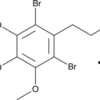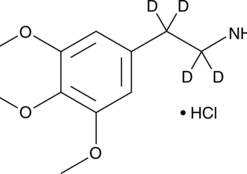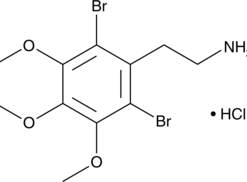3,4-MDMA methylene homolog (hydrochloride)
$70.00 – $100.00
3,4-MDMA Methylene Homolog: An In-Depth Exploration
Introduction to 3,4-MDMA and Its Methylene Homolog
3,4-MDMA (3,4-methylenedioxy-N-methylamphetamine) is a well-known psychoactive substance primarily studied for its potential therapeutic effects and recreational use. It belongs to a class of compounds called substituted amphetamines, which include MDMA (Ecstasy), MDA (3,4-methylenedioxyamphetamine), and their related analogs. The methylene homolog of 3,4-MDMA is a chemical variant where the methylene group (CH2) is integrated into the molecular structure, altering its characteristics in terms of potency, pharmacological effects, and potential uses.
This article explores the methylene homolog of 3,4-MDMA, focusing on its chemical properties, synthesis, applications, and the global availability for researchers and industrial chemists.
What is the Methylene Homolog of 3,4-MDMA?
The methylene homolog of 3,4-MDMA refers to a structural modification where a methylene (–CH2–) group is incorporated into the molecular backbone of the compound. This modification impacts the pharmacological activity and physical properties of the compound, potentially leading to new research applications or altering its psychoactive effects. The methylene homolog may exhibit differences in bioavailability, metabolism, and receptor binding profiles, making it a subject of interest in medicinal chemistry and psychopharmacology.
The key difference between 3,4-MDMA and its methylene homolog lies in this subtle modification to its structure, which can result in significant shifts in how the compound interacts with the human body. Research into the methylene homolog could reveal potential therapeutic applications, especially within the field of psychiatry and neurology, given the growing interest in MDMA-related substances for conditions such as PTSD.
Molecular Structure
The methylene homolog of 3,4-MDMA retains the methylenedioxy group attached to a benzene ring, but the addition of a methylene group can alter its electronic configuration, stability, and interaction with various biological receptors. The modification can change its molecular size, solubility, and reactivity, which could be crucial for enhancing or diminishing its effects.
Synthesis of 3,4-MDMA Methylene Homolog
Synthesizing the methylene homolog of 3,4-MDMA involves careful organic chemistry techniques to incorporate the methylene group into the molecular structure of MDMA. Researchers typically start with a precursor molecule that can be modified through a series of reactions to introduce the desired changes.
Key Steps in the Synthesis Process:
- Starting Materials: Typically, the synthesis begins with known intermediates from the amphetamine class or closely related compounds such as MDA. The precursor compound needs to have the appropriate functional groups to allow for methylene insertion.
- Methylene Group Introduction: The methylene group is often introduced through an electrophilic aromatic substitution or other selective addition reactions. Specialized reagents and catalysts are used to ensure that the methylene group is introduced at the correct position in the molecule.
- Purification and Characterization: Following the synthesis, the methylene homolog is isolated and purified using standard techniques like recrystallization, column chromatography, or distillation. Characterization typically involves nuclear magnetic resonance (NMR) spectroscopy, mass spectrometry (MS), and infrared (IR) spectroscopy to confirm the molecular structure.
Pharmacological Properties of the Methylene Homolog
The methylene homolog of 3,4-MDMA is hypothesized to exhibit unique pharmacological properties compared to its parent compound, 3,4-MDMA. These properties are often determined by the specific molecular interactions the compound undergoes with various neurotransmitter receptors, particularly those in the serotonin, dopamine, and norepinephrine systems.
Receptor Binding
Research suggests that the methylene homolog may interact differently with serotonin receptors (specifically 5-HT receptors) compared to 3,4-MDMA. The alteration of the chemical structure by the methylene group can lead to a change in receptor affinity, potentially influencing the compound’s psychoactive effects, such as mood enhancement, empathy, and euphoria.
Neurochemical Effects
The methylene homolog of 3,4-MDMA may affect neurotransmitter release and reuptake in a manner similar to or distinct from 3,4-MDMA. It could promote the release of serotonin, dopamine, and norepinephrine, contributing to stimulating or empathogenic effects. However, the methylene modification could also influence how quickly these neurotransmitters are cleared from the synaptic cleft or how long their effects last.
Psychoactive Effects
Given its close structural resemblance to MDMA and MDA, the methylene homolog is likely to have psychoactive effects. The inclusion of the methylene group could modify the intensity, duration, or onset of these effects. Researchers will need to conduct comprehensive animal studies and human trials to understand how the methylene homolog of 3,4-MDMA compares to MDMA in terms of its pharmacokinetics and pharmacodynamics.
Applications of 3,4-MDMA Methylene Homolog
The methylene homolog of 3,4-MDMA holds significant promise in both scientific research and potential therapeutic applications. The alteration of the chemical structure may lead to different biological activity, which could offer new opportunities in the treatment of neurological and psychological conditions.
Therapeutic Research
One of the primary applications of the methylene homolog is in the realm of psychiatric treatment, particularly for disorders like PTSD (Post-Traumatic Stress Disorder), anxiety, and depression. The psychoactive properties of the methylene homolog may make it a useful candidate in ongoing studies exploring the potential of MDMA and related compounds for therapeutic use.
For instance, MDMA is already being studied as part of clinical trials for PTSD treatment, and similar compounds like the methylene homolog may also show promise. The altered pharmacological profile could provide a different balance between efficacy and side effects, making it a potential candidate for use in controlled, therapeutic settings.
Neuroscientific Research
Researchers are also interested in the methylene homolog as a tool for better understanding serotonin system dynamics, particularly in relation to mood and cognition. By comparing the effects of 3,4-MDMA and its methylene homolog, scientists could gain insights into how minor structural changes influence the function of neurotransmitter systems in the brain.
Global Availability of the Methylene Homolog
Researchers and industrial chemists interested in studying or synthesizing the methylene homolog of 3,4-MDMA may need to source it or its precursors from trusted suppliers. Depending on the region, there are several ways to acquire the necessary chemicals and reagents.
Buy Methylene Homolog in Australia
In Australia, specialty chemical suppliers provide a range of reagents for pharmaceutical and chemical research, including those related to substituted amphetamines and their homologs. Researchers looking to buy the methylene homolog in Australia will typically find it available through local or international suppliers that comply with local regulations and research guidelines.
Buy Methylene Homolog in the UK
The UK hosts a number of reputable chemical supply companies that offer reagents for scientific research, including the methylene homolog of 3,4-MDMA. British researchers can obtain these substances through established chemical suppliers, with many options for safe and legal purchase. Online marketplaces often offer international shipping options, ensuring that the methylene homolog is available for research purposes across the UK.
Buy Methylene Homolog in Europe
Across Europe, many countries have well-established chemical research industries, with suppliers offering access to a wide array of reagents, including the methylene homolog of 3,4-MDMA. European researchers in countries such as Germany, France, and the Netherlands can easily buy methylene homolog compounds through local distributors or global chemical suppliers, ensuring they receive high-quality materials for research.
Buy Methylene Homolog in the USA
The USA has an extensive market for chemical reagents and fine chemicals, with numerous companies offering specialized compounds such as the methylene homolog of 3,4-MDMA. US-based researchers can purchase these substances for laboratory purposes through established suppliers. Many of these suppliers offer extensive catalogs and convenient shipping options for customers within the USA and internationally.
Safety and Legal Considerations
While the methylene homolog of 3,4-MDMA holds great potential for scientific and therapeutic purposes, it is important to be aware of the safety and legal considerations when handling or acquiring such compounds.
Safety Precautions
When working with the methylene homolog, researchers must follow proper safety protocols, including wearing personal protective equipment (PPE) such as gloves, goggles, and lab coats. Moreover, Handling should take place in a well-ventilated area to avoid inhalation of potentially hazardous vapors or dust. Proper disposal of chemicals and waste is essential to maintain laboratory safety and environmental responsibility.
Legal Regulations
Therefore, The legal status of the methylene homolog and related compounds varies by region. In some countries, the sale and use of compounds like the methylene homolog may be strictly regulated due to their potential psychoactive effects. Researchers must ensure they are in compliance with local regulations governing the synthesis, sale, and use of such compounds, especially when it comes to experimental studies or therapeutic trials.
Conclusion
The methylene homolog of 3,4-MDMA presents an exciting area of research due to its potential therapeutic applications and unique pharmacological properties. Furthermore, Understanding the differences in how this compound interacts with the serotonin and dopamine systems could offer valuable insights into the development of future medications for psychiatric conditions like PTSD and depression. Lastly, As the global interest in MDMA and its analogs grows, sourcing high-quality methylene homolog compounds from reputable suppliers across regions like Australia, the UK, Europe, and the USA is essential for continued scientific exploration.
With ongoing research and development, the methylene homolog of 3,4-MDMA could pave the way for new treatments and therapeutic strategies, contributing to the advancement of both pharmaceutical and neurochemical sciences.
| 3,4-MDMA methylene homolog (hydrochloride) | 5Gram, 10Grams |
|---|
Be the first to review “3,4-MDMA methylene homolog (hydrochloride)” Cancel reply
Related products
MDMA Research Chemicals
MDMA Research Chemicals
MDMA Research Chemicals
MDMA Research Chemicals
MDMA Research Chemicals
MDMA Research Chemicals
MDMA Research Chemicals





Reviews
There are no reviews yet.